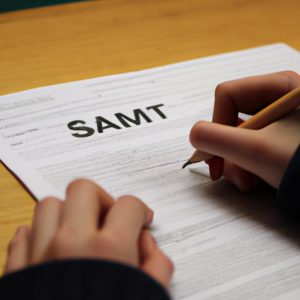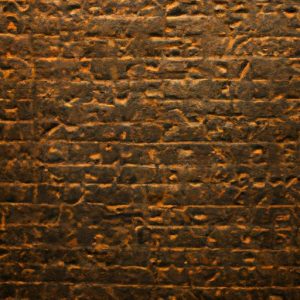Writing has long been revered as a means of expression, but is it truly an art form? This question has sparked much debate among literary enthusiasts and scholars alike. Let’s delve into this intriguing topic and unravel the mysteries of whether writing can be considered an art.
A. Defining Writing as an Art Form
To embark on this exploration, we must first define the essence of art and how it aligns with the craft of writing. Art, in its purest form, is an expression of creativity, imagination, and originality. It encompasses various mediums, from painting and sculpture to music and dance. Writing, with its ability to weave words into captivating narratives, certainly possesses these artistic qualities.
B. The Significance of Discussing Writing as Art
Engaging in a discourse on whether writing is an art form holds immense importance. It allows us to appreciate the depth and intricacy of the written word, while also providing insights into the creative process and the skills required to master this craft. By exploring writing as an art, we can foster a greater understanding of its impact on individuals and society as a whole.
As we embark on this journey, let’s peel back the layers of writing and discover the creative aspects that make it a truly artistic endeavor. Join me as we delve into the realm of storytelling, expression, and the amalgamation of technical skills that make writing a captivating art form.
Stay tuned for the next section, where we explore the creative aspect of writing and how it parallels traditional art forms.
The Creative Aspect of Writing
Writing, at its core, is a realm of boundless creativity. Within the lines and paragraphs, writers have the power to transport readers to unimaginable worlds, evoke emotions, and provoke thought. Let’s delve into the elements that make writing an art form and how writers harness their creativity to craft compelling works.
A. Exploring the Elements of Creativity in Writing
Creativity in writing encompasses a multitude of facets. It involves the ability to think outside the box, to break free from conventional structures, and to infuse originality into every word penned. Writers have the unique opportunity to mold their ideas into narratives that captivate and resonate with readers, pushing the boundaries of imagination and exploring new territories of thought.
B. Harnessing Imagination and Originality
Imagination is the lifeblood of writing as an art form. It allows writers to conjure vivid imagery, construct intricate plots, and breathe life into characters. Through imagination, writers can paint literary masterpieces that captivate readers’ minds and whisk them away on extraordinary journeys. Furthermore, originality plays a pivotal role in shaping the artistic value of writing. It is through the infusion of unique perspectives, ideas, and voices that writers create works that stand apart from the rest.
C. Comparing Writing to Other Traditional Art Forms
While writing may not be as visually evident as painting or as sonically vibrant as music, it shares commonalities with other traditional art forms. Like a painter’s brushstrokes or a musician’s melody, writing has the power to evoke emotions, provoke introspection, and offer profound insights into the human experience. Just as visual art and music are celebrated for their artistic merits, writing too deserves recognition as a medium that taps into the depths of human creativity.
As we continue our exploration, we will now delve into the realm of emotion and how writing serves as a powerful vessel for expressing the deepest facets of the human soul.
Stay tuned for the next section, where we uncover the profound ability of writing to express emotions.
Expressing Emotions through Writing
Writing has the remarkable power to evoke a myriad of emotions within its readers. Let’s delve into how writers skillfully navigate the realms of human emotions and create profound connections through their words.
A. Analyzing how writers evoke emotions through their words
Writers possess the ability to craft sentences that resonate deep within our souls, stirring up a whirlwind of emotions. Through the careful selection of words, vivid descriptions, and poignant metaphors, they can transport us to different worlds and make us feel joy, sorrow, love, or even fear. Whether it’s a heart-wrenching tragedy or an uplifting tale of triumph, writers have the gift of igniting our innermost emotions through their art.
B. The role of storytelling in conveying emotions
Storytelling is a fundamental aspect of writing, and it serves as a powerful vessel for conveying emotions. By weaving intricate narratives and developing relatable characters, writers have the ability to evoke empathy and understanding in their readers. Through the trials and tribulations of their protagonists, writers can mirror real-life experiences, allowing us to connect with the emotions portrayed in their stories. The art of storytelling enables writers to touch the deepest corners of our hearts and leave a lasting impact on our emotions.
C. Examples of renowned writers who excel in expressing emotions through their writing
Throughout history, countless writers have demonstrated a remarkable aptitude for expressing emotions through their writing. From the melancholic prose of Virginia Woolf to the passionate poetry of Maya Angelou, these literary icons have left an indelible mark on readers with their ability to capture the complexities of human emotions. Their words have the power to move us to tears, inspire us to action, and evoke a profound sense of empathy. These luminaries serve as a testament to the artistry of writing and its capacity to evoke emotions that transcend time and space.
Stay tuned for the next section, where we explore the technical skills in writing and how they enhance its artistic value.
The Technical Skills in Writing
Writing, like any other art form, requires a strong foundation of technical skills to elevate it to a higher artistic level. Let’s explore the technical aspects of writing and how they contribute to its artistic value.
A. Discussing the Technical Aspects of Writing
Writing encompasses a myriad of technical elements that go beyond the mere arrangement of words. It involves understanding grammar rules, sentence structure, punctuation, and the art of storytelling. By delving into these technical aspects, writers can effectively convey their ideas with clarity and precision.
B. Grammar, Syntax, and Vocabulary in Relation to Writing as an Art
Grammar, syntax, and vocabulary play a pivotal role in shaping the artistic nature of writing. A skilled writer knows how to manipulate language to create rhythm, evoke emotions, and paint vivid imagery. Just as a painter skillfully selects colors and brushstrokes, a writer carefully chooses words and sentence structures to craft their art.
The artistry of writing lies not only in the words chosen but also in their arrangement. Sentence structure, sentence length, and the use of literary devices such as metaphors and similes contribute to the overall artistic appeal of a written piece. These technical skills allow writers to create a symphony of words that resonates with readers on a profound level.
C. How Mastering Technical Skills Enhances the Artistic Value of Writing
Mastery of the technical skills of writing enhances the artistic value of the craft. When writers possess a strong foundation in grammar, syntax, and vocabulary, they have the tools to effectively convey their thoughts and emotions. It allows them to break free from the constraints of basic communication and delve into the realm of artistry.
By honing their technical skills, writers can push the boundaries of creativity and experiment with different writing styles. They can employ literary techniques, play with language, and create unique voices that captivate readers. The mastery of technical skills enables writers to transcend mere communication and transform their words into a work of art.
In the upcoming section, we will explore the subjective nature of art and writing, diving into different perspectives on whether writing can truly be considered an art form.
The Subjectivity of Art and Writing
Art, in all its forms, is inherently subjective. The same holds true for writing. Let’s delve into the subjective nature of art and writing, exploring different perspectives on whether writing can truly be considered an art form.
A. Exploring the Subjective Nature
Art, whether visual, auditory, or literary, is subjective by nature. It evokes different emotions, interpretations, and reactions from each individual. Writing, as an art form, is no exception. The beauty of writing lies in its ability to connect with readers on a personal level, eliciting unique responses and sparking individual thoughts and feelings.
B. Different Perspectives on Writing as Art
Opinions on whether writing can be considered an art form vary widely. Some argue that art should be limited to traditional forms like painting or sculpture, while others argue that writing possesses the same artistic qualities. It is in the exploration of these diverse perspectives where we truly understand the complexity of this question.
C. Uniqueness and Individuality in Writing as an Art
One cannot deny the uniqueness and individuality inherent in writing as an art form. Every writer has their own voice, style, and perspective, which contribute to the rich tapestry of literary works. Just like a painter’s brushstrokes or a musician’s melodies, a writer’s words bear their creative essence, making each piece of writing a distinct and personal expression of art.
As we navigate the vast landscape of art and writing, it is crucial to acknowledge and appreciate the subjectivity that exists. The diverse perspectives and interpretations of writing as an art form enrich our understanding and enable us to celebrate the individuality and uniqueness that lies within every writer’s craft.
Continue reading to discover the role of technical skills in amplifying the artistic value of writing in the next section.
Conclusion
In conclusion, the question of whether writing is an art sparks a fascinating and ongoing debate. By delving into the realms of creativity, expression, technical skills, and subjectivity, we have explored the multifaceted nature of writing as an art form.
Writing undeniably possesses the elements of artistry, as it requires imagination, originality, and the ability to evoke emotions through words. Writers weave stories, paint vivid landscapes with their prose, and transport readers to new worlds. The technical mastery of grammar, syntax, and vocabulary further enhances the artistic value of writing.
However, the subjectivity of art and writing cannot be disregarded. Some may argue that art must involve physical mediums or visual representations, while others embrace the notion that art encompasses any form of creative expression. The uniqueness and individuality of writing allow it to transcend mere communication and enter the realm of art.
Ultimately, the perception of writing as an art form is a personal interpretation. It is a fusion of creativity, technical prowess, and the ability to connect with readers on an emotional level. Whether you consider writing an art or not, the undeniable impact it has on individuals and society cannot be overlooked.
So, the next time you pick up a pen or tap away on a keyboard, remember that you are engaging in an art form that has the power to captivate, inspire, and transcend boundaries. Embrace the artistry of writing and let your words paint a masterpiece for the world to behold.
Thank you for joining me on this exploration of whether writing is an art. Feel free to continue pondering this question and engaging in conversations that celebrate the beauty and power of the written word.




